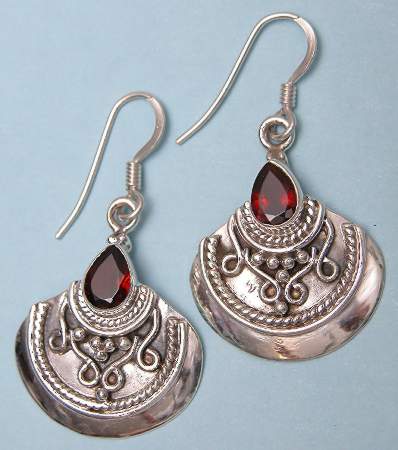Earring
Earrings are jewelry attached to the ear through a piercing in the earlobe or some other external part of the ear (except in the case of clip earrings, which clip onto the lobe). Earrings are worn by both sexes. In western cultures, earrings have traditionally been worn primarily by women, although in recent decades, ear piercing has also become popular among men in North America, Europe, Asia and Africa.
Ear piercing has been a part of human culture ever since the earliest hunter-gatherer tribes. Though the phrase “ear piercing” most often refers to a single hole in the earlobe, there are at least eight other locations for the ear to be pierced. There is the helix of the ear, also called the “cartilage” (an inaccurate term, as the entire ear is made of cartilage), which is the most common place to get a piercing, aside from the lobe. All piercings in the upper part of the ear are referred to as cartilage piercings.
The process of having your cartilage pierced is usually more elaborate and painful than a piercing in the lobe. Earrings, studs, and loops for ear piercings are made out of a wide variety of materials. These include metal, plastic, wood, stone, and glass. Many earrings are fairly cheap, and can be bought almost anywhere. Other earrings are expensive, especially if they have been crafted using rare, high quality materials, such as gold, silver, platinum, and EGL loose diamonds or other precious stones.
In recorded history, earrings have been traced back to the ancient city of Perspolis, Persia, where the illustrations on the walls depict soldiers wearing earrings. The oldest earrings ever discovered were crafted in 2500 BC Iraq. During the Dark Ages, when most of the populace was impoverished, the popularity of earrings and other pieces of jewelry sharply declined. As nations rose again, especially during the Roman Empire, jewelry was crafted and worn with gusto as a sign of status and luxury. The popularity of earrings also largely depended on the fashions that prevailed at the time.
During the 1850s, earrings lost popularity once again. Hair was tied behind the head, covering the ears, or bonnets and hats were worn. In addition, the religious and social sentiments of the time associated earrings with heathens, vanity, and excess. With the 1920s came the advent of the clip-on earring, causing ear piercing to fall more out of favor. However, during this time, small groups of males were fond of piercing their ears. Sailors especially saw earrings as a symbol of their seafaring adventures.
